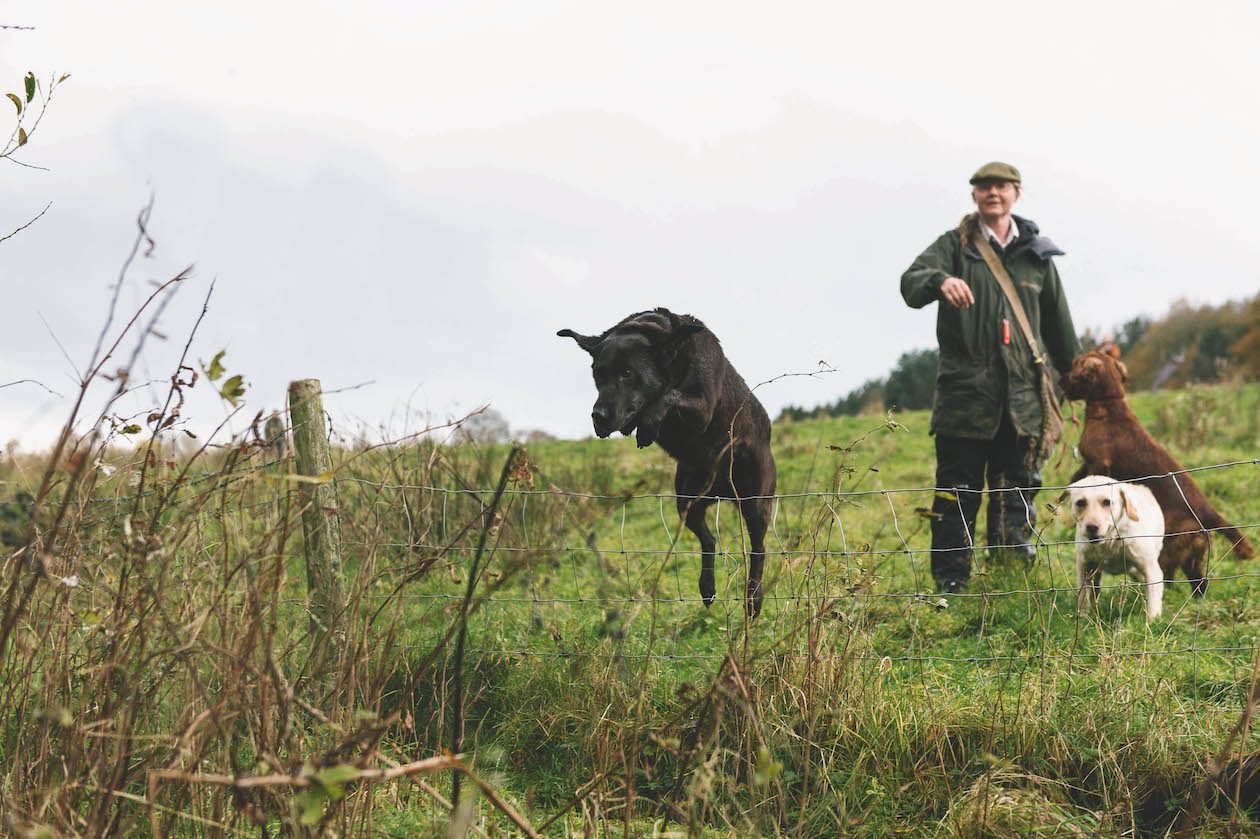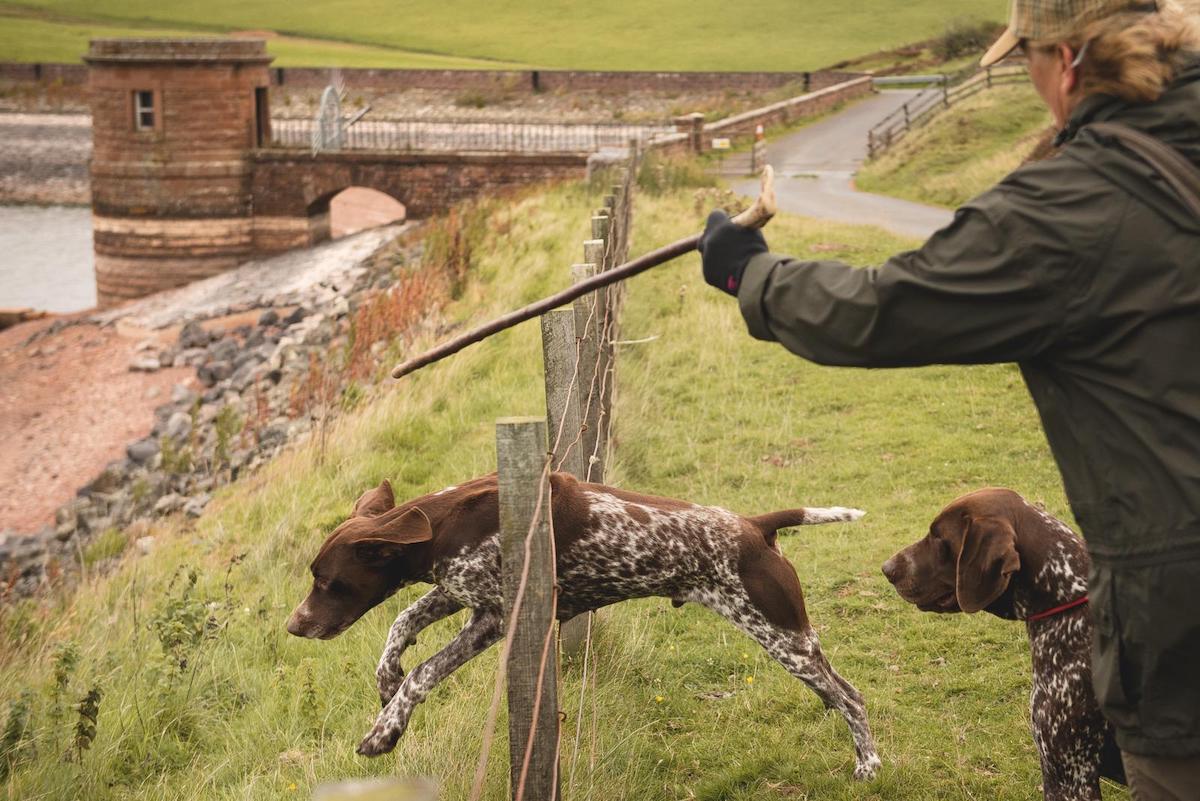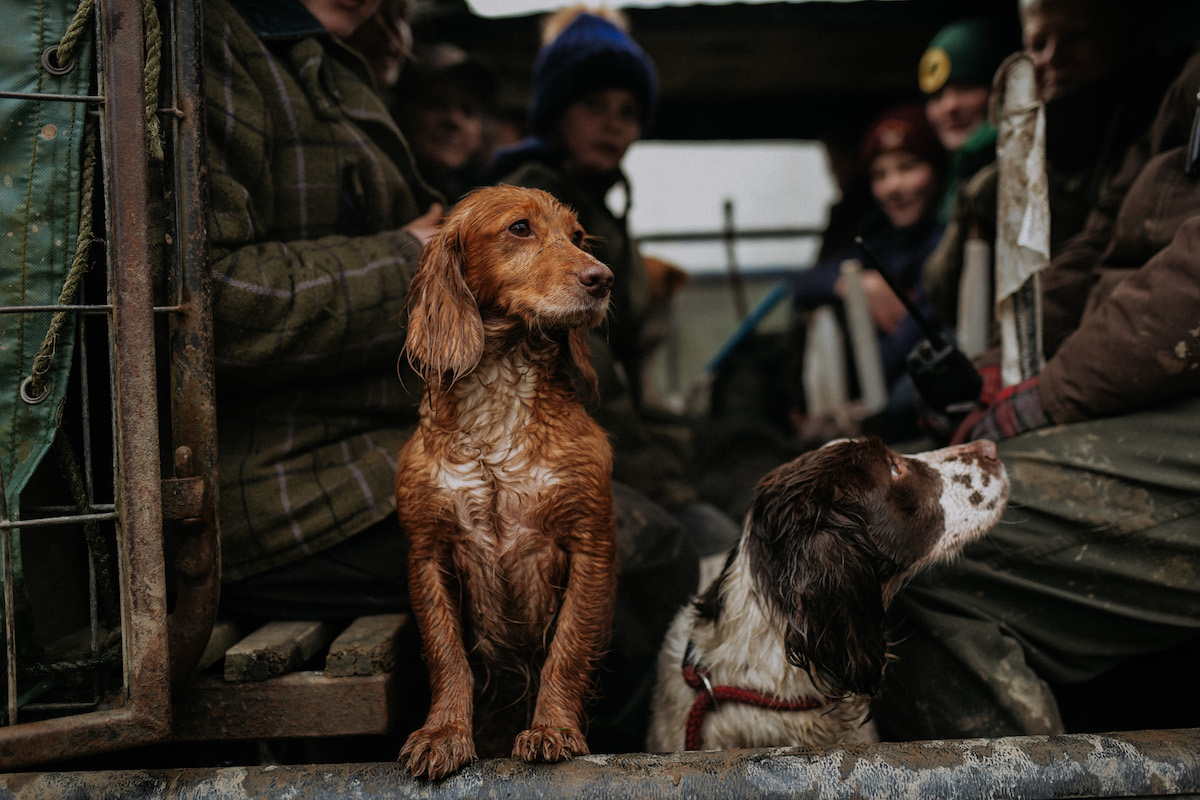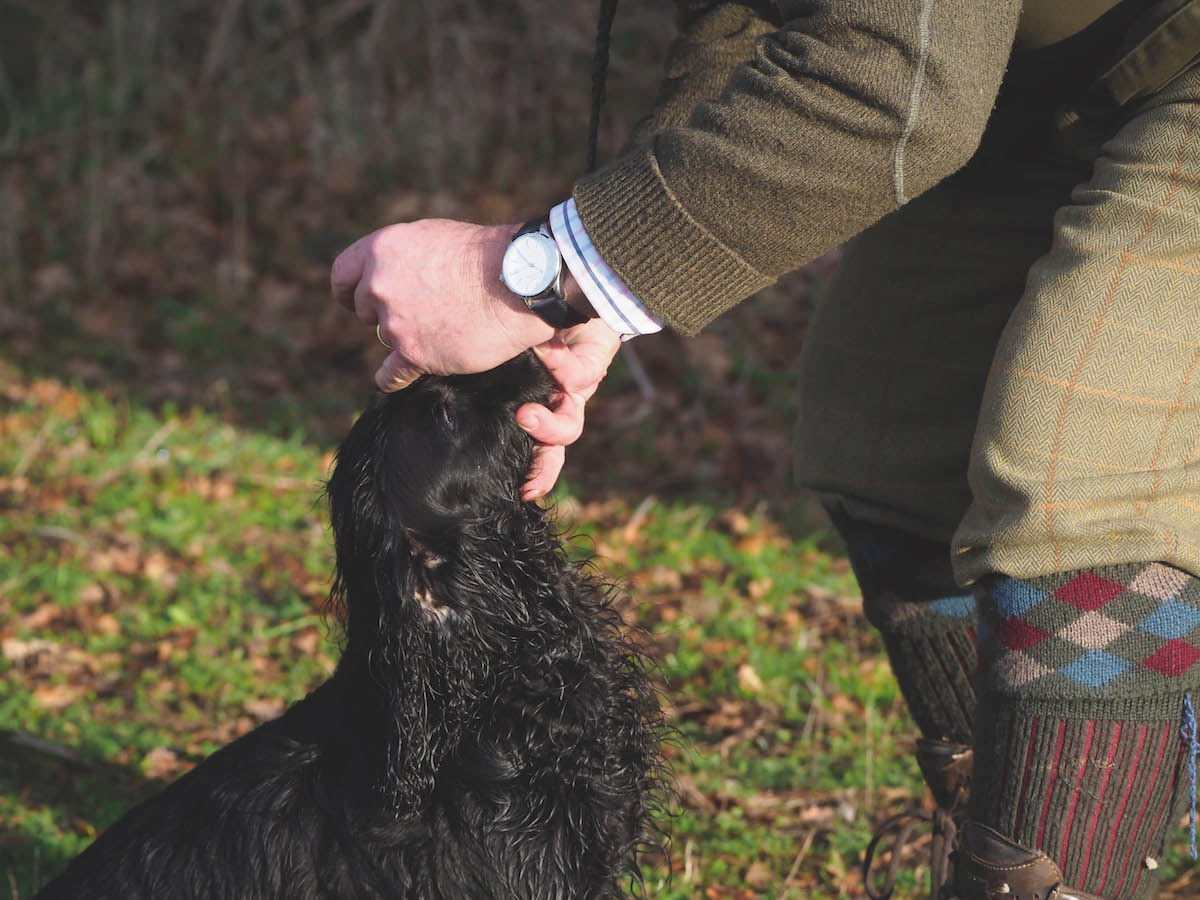Working dog hazards to watch out for in the field
Shooting without dogs is unthinkable — so we must do everything in our power to make sure they’re safe in the field, says Graham Lorne

Dogs jumping fences can be a thrilling spectacle but handlers must ensure it is safe
I sometimes think back over the countless hours I have spent in the countryside with my dogs. Whether it was roost shooting, wildfowling, rough shooting, pigeon decoying, beating, standing on a peg or simply going for a short evening walk, I almost certainly had a dog by my side.
Working dog hazards
There were remarkably few occasions when the dogs picked up an injury. Indeed, having flicked through some of my diaries, I am now convinced it’s nothing short of a miracle that one of my canine pals didn’t suffer a serious calamity.
Of course, bad luck can always rear its ugly head. Like the time a friend’s dog suffered a ruptured cruciate ligament while completing a routine dummy retrieve on a freshly mown meadow. Only the skills of a vet — and the subsequent £4,000 bill — allow the dog to be enjoying his well-earned retirement still. (Read more on how to keep your dog safe on a shoot day.)
Working dog hazards that are a real bugbear of mine are the broken glass that litters our countryside. During the past 50 years, I have detected an increasing trend among unenlightened farmers to dump rubbish in dew ponds and pit-holes. This can range from vintage tractors — an International B-250 sat in a dryish pond for more than a decade until it was winched out, given a service and sold for £500 at auction when the market for vintage farm memorabilia suddenly spiked — to garden and household waste.

Sod’s Law means the accidents that put dogs out of commission invariably happen mid-season
Broken glass
One smashing little clay pit-hole on a rough shoot I hired in the 1980s always held a pheasant or a mallard when I made a Saturday afternoon visit. Then a trailer-load of building waste from a farm cottage that was being modernised was dumped on it, including several panes of broken glass that smashed when the trailer had been tipped. I never took my dog near the pit again.
I later heard the farmer’s son had nearly lost his lovely golden retriever after it slashed its leg while nosing about the pit. The son carried the fading dog back to the farm and rushed it to a vet where, after a blood transfusion, its life was saved. And all for the sake of dumping some glass and creating dangerous working dog hazards.
For some reason, ponds were often used as Victorian bottle dumps. Given we’re now in the heart of the close season, this is the moment to have a quick look around and clear away any broken bottles or jagged shards.
Another danger to dogs that should never occur is the number of rusting oilcans that people used to dump in ponds when scrap-metal prices were low. Scrap metal is more valuable at the moment than it has been for some years, so now’s also the time to fill up the Land Rover with all those bits that have been lying around the place and clear them out of dogs’ way.
We can only hope that Defra’s Environmental Land Management Scheme (ELMS) will prevent further desecration of our countryside.
Of course, dogs aren’t only at danger from broken glass and metal. One of my labradors was a real speed merchant and his swift acceleration put him at risk, especially during frosts and summer dry spells. Our local clay brick soil holds more than its share of flints, many of which break when in collision with the plough. It was a frequent event for the dog to cut a pad on flints and — as many of you will no doubt know — it can take a while for a split pad to heal properly. It’s Sod’s Law that it usually happens mid-season when you need your dog the most.

Water can hide all sorts of dangers
Infection
Grass seeds catching between the toes are a natural hazard that have also been an occasional issue for my dogs. It sounds relatively trivial, but the reality is that the seed has the potential to migrate into the leg and ligaments or tendons, causing abscesses and infection along the way. Both occasions required overnight veterinary intervention, while ears and eyes are also at risk. You might be told that this is a summer problem, but having old Tommy out of commission for three weeks in November proves this theory wrong. (Read more on how to keep your dog free from grass seeds.)
Now we come to that most dreaded of countryside obstacles — barbed wire. It’s frightening how many apparently innocent hedgerows contain a few hidden strands of barbed wire. Back in the days when farming was in the doldrums and mixed farms were in the majority, it was a cheap option to use barbed wire to make a straggly hedge stockproof.
Subsequently, the hedges have filled out and only a gundog on a retrieve — or a ferreter trying to place a purse-net on a pop-hole — is likely to fall foul of the wire. The results for dogs can be nasty, ranging from gash wounds to plucked skin that requires stitching by a competent vet. Such events can completely spoil a handler’s day, while the stress of locating an emergency vet on a Saturday afternoon is matched only by finding the means to pay for it.
Joking aside, I have always been extremely grateful to the on-call vets for their good-natured professionalism during such traumatic incidents. Once again, this is a decent time to be having a scan about and see what can be spotted and cleared, before full growth completely obscures the odious legacy wire for another year.
Lethal
What does amaze me is how field trial competitors train their dogs to jump fences. It can be a thrilling spectacle but it’s not a habit I would encourage a dog to get into without the handler’s command. A collision with chicken wire or sheep netting as a dog jumps can cause abrasions, but barbed wire can be lethal. One of the nastiest incidents I saw occurred when a chap sent his trial-standard retriever after a runner. The dog jumped a fence topped with barbed wire and completed the retrieve but was later seen to be paying a lot of attention to his nether regions. Their day was over when the owner had a closer look, and the vet was later required to insert a stitch because the dog had nicked his penile sheath as he had cleared the wire.
The moral of this particular story is that for dignity’s sake, it often pays to walk a short distance and use a gate rather than playing to the gallery. Watch out for those working dog hazards.








